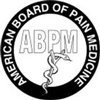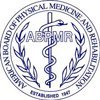Home »
Blog » Physical Therapy
| Stem Cell, PRP, Acupuncture in Queens & Long Island, New York
Physical Therapy | Stem Cell, PRP, Acupuncture in Queens & Long Island, New York
What is Hip Tendonitis? Tendons are fibrous tissues that connect muscles to bones, enabling movement. In the hip joint, tendons endure tremendous strain as they support activities like walking, running, climbing stairs, and even sitting. When these tendons become overused or injured, they can become inflamed, leading to a painful condition known as hip tendonitis. This condition can affect anyone, but it’s especially common in athletes, older adults, or individuals with jobs that require repetitive motions. For many, the pain isn’t just physical, it’s emotional, too. Feeling unable to do the things you love, or even just move without discomfort, can weigh heavily on the mind and spirit.
Read more
Hip arthritis is a common yet often misunderstood condition that can significantly affect quality of life. Characterized by the deterioration of the cartilage in the hip joint, it leads to pain, stiffness, and difficulty in performing everyday activities. With advancements in medicine, particularly interventional pain management, there are effective ways to manage this condition and regain mobility and independence.
Read more
The hip is a critical joint in the human body, playing a central role in mobility and weight-bearing activities. A hip sprain or strain can significantly impact daily life, causing pain, limited movement, and difficulty performing even simple tasks. Understanding the condition and the advanced treatment options available, including interventional pain management, can make a significant difference in recovery and quality of life.
Read more
Tennis elbow, medically known as lateral epicondylitis, is a common condition that causes pain and discomfort in the outer part of the elbow. Despite its name, tennis elbow doesn’t only affect tennis players. It’s a condition that can impact anyone who performs repetitive arm and wrist movements, such as painters, plumbers, or even office workers. This article explores the nature of tennis elbow, its causes, symptoms, and treatment options, focusing on how interventional pain management can provide relief and restore functionality.
Read more
Golfer's elbow, medically known as medial epicondylitis, is a condition characterized by pain and inflammation on the inner side of the elbow. This ailment results from overuse or repetitive stress, leading to microtears in the tendons that attach to the medial epicondyle—the bony prominence on the inside of the elbow. While commonly associated with golfers, this condition can affect anyone engaging in activities that involve repetitive wrist and forearm motions.
Read more
What Are Elbow Sprains and Strains? An elbow sprain involves stretching or tearing the ligaments—the tough bands of tissue connecting bones—within the elbow joint. This typically occurs due to a sudden force, such as a fall onto an outstretched hand or a direct blow to the elbow. Conversely, an elbow strain refers to an injury of the muscles or tendons around the elbow, often resulting from overuse or excessive stretching.
Read more
Olecranon bursitis, commonly known as "student's elbow," is an inflammation of the bursa located over the olecranon process at the elbow's tip. This condition can cause pain, swelling, and limited elbow movement, affecting daily activities and quality of life. Interventional pain management offers effective strategies to alleviate symptoms and address the underlying causes of olecranon bursitis.
Read more
Chiropractic adjustment (spinal manipulation) of the cervical spine is usually accomplished with the patient either lying down on his or her back or in a seated position. Alternatively, the patient may be placed in a prone position (lying face down), an approach often used in lower cervical/upper thoracic vertebral and rib/vertebra ("costovertebral") joint manipulation.
Read more
Chiropractic manipulation can address several causes of neck pain. It is not a treatment for every type of neck problem, but on the other hand, is also considered a first line of treatment for many. Two typical causes of pain that originate in the neck and may be treated by manipulation include mechanical neck pain and disc problems.
Read more
Stretches and exercises for neck pain can offer relief, but it’s important to assess your pain level first. Here’s a guide to help you determine whether at-home neck exercises are right for you. The phrase “pain in the neck” rings true for many people — in fact, neck pain is one of the top types of pain reported, according to the American Physical Therapy Association.
Read more
Love this Post? Spread the World






















